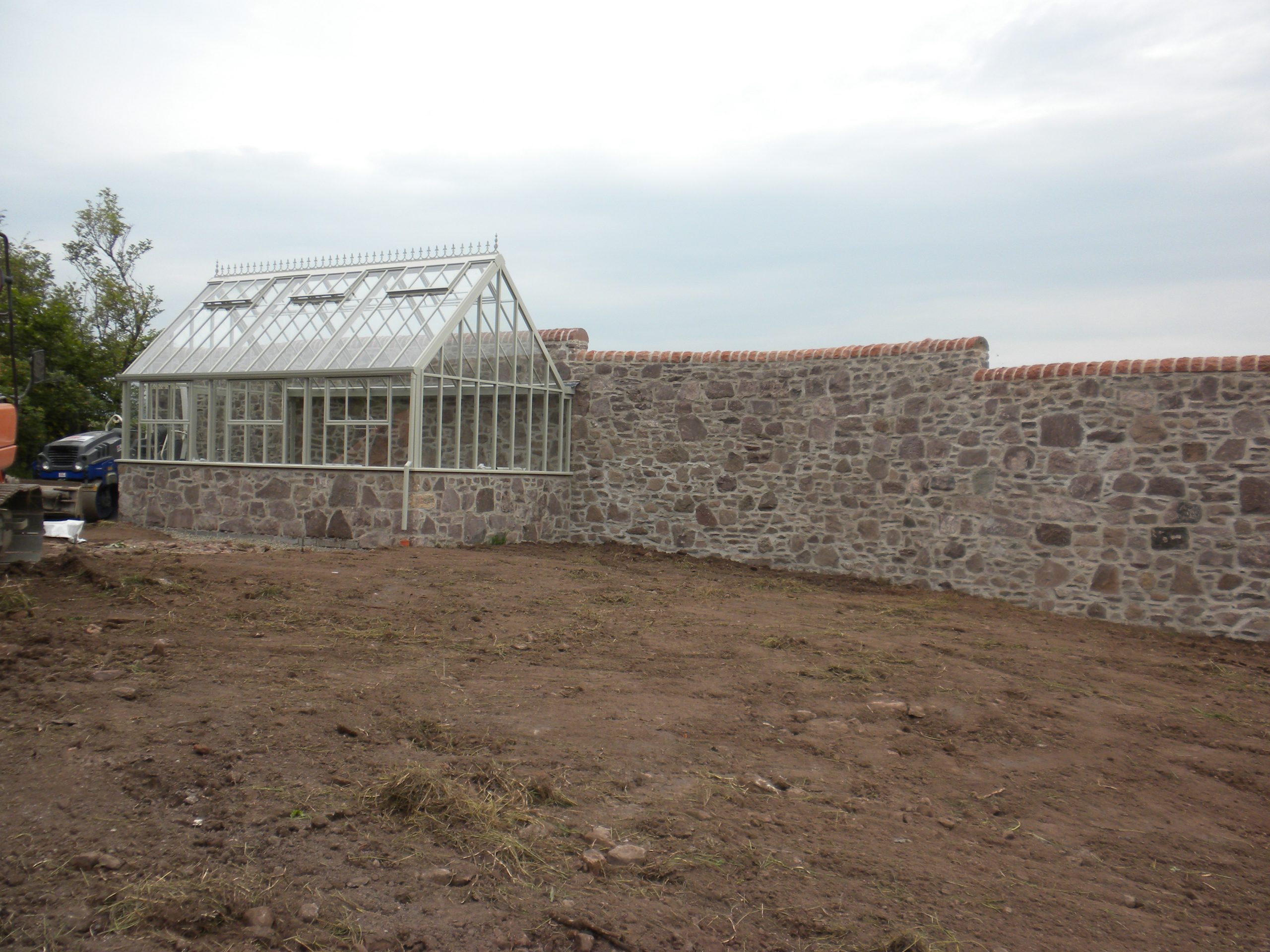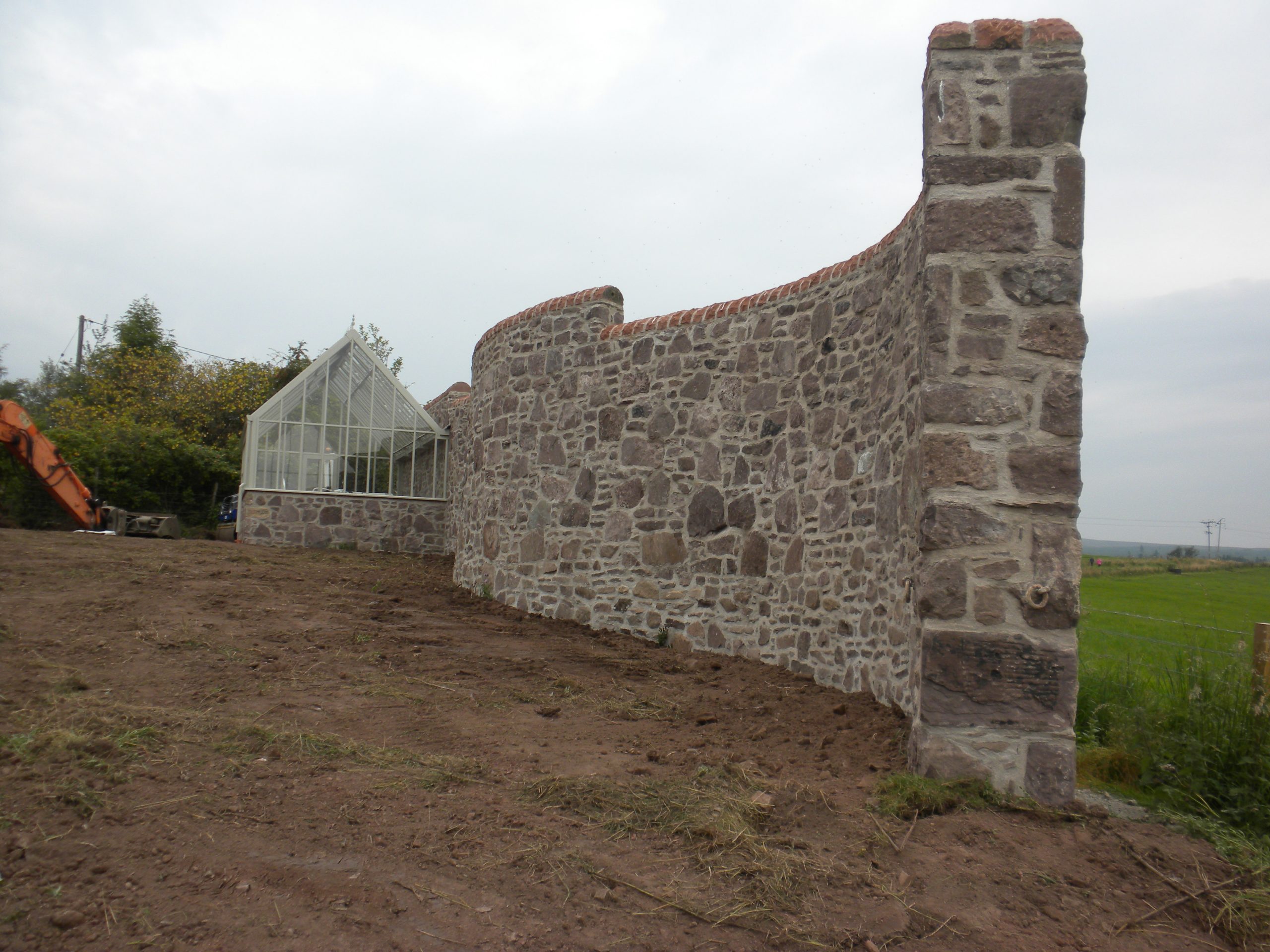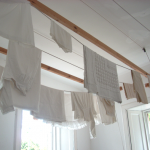Dear Kris,
I thought that you might be interested in the two photos that I attach and which were inspired by your 2015 article on Fruit walls.
Living outside Dunblane in central Scotland, I have long wanted to be able to grow fruits, such as grapes, figs and perhaps peaches, that would not normally be successful here so a lean-to greenhouse seemed the only solution. However, as I would be erecting the greenhouse in an open field the wall had constructed as well. Some years ago I visited the walled garden at Meggich Castle, some 50km north-east of here, and saw various old apple and especially pear trees growing in the much neglected walled garden there (I believe that they have started on a scheme to plant new fruit trees from the old stock). However, reproducing such a walled garden, about 100 m square with walls 5 m tall, was an impossible (and impossibly expensive) task, so I looked online and found your article.
I was much taken with the photo in the article of a serpentine wall in the Netherlands, and so decided to copy the idea, and you can see the result in my photos. The wall is 30 m in length and averages 3 m in height (it has to be stepped because of the slope in the field) and tapers from 40 cm thick at the base to 30 cm at the top. It is made from local stone, a form of red sandstone, some of which I lifted from the field when it was ploughed many years ago, and the rest from an old building in a nearby village. The building was a former smiddy (the Scots term; it is smithy in England) and you can see in the second photo two metal rings embedded in the stone of the nearest column which I believe would have been used to tie up horses when they were having new shoes fitted. I hasten to add that it was two local stonemasons that I employed for the construction, and not me!
I am now waiting for some paving slabs to be laid around the greenhouse and then I need to buy some trees. I already have five apple trees in my garden which usually do quite well though this year late frosts meant only the last two to come into blossom yielded any fruit; plums have not been successful and I have replaced them with pears. I hope that the new wall will provide enough shelter to grow quince and mulberry, amongst others.
I have recently come across others locally who have successfully grown grapes and one with a large conservatory with a vine on the south side and a peach on the north, both some 30 years old. This last I saw in the spring as part of the Scotland’s Gardens Scheme where people open up their gardens to the public, with the entrance fees going to charity. Usually they are just the gardens of the wealthy, but sometimes several residents of a village will all open their small gardens on the one day. https://scotlandsgardens.org/
It is surprising how many walled gardens remain in the UK; they were originally used to grow fruit and vegetables to feed the owners of large houses and their staff, but after the First World War, when staff shortages became common (many having been killed in the war), the gardens often fell into disrepair. However, over the past few years many are being restored and used as intended. This is no doubt helped by the gardening programs on UK TV, especially as some of the presenters have acquired walled gardens themselves from where they present their programs.
Once again, thank you for your article and indeed for your splendid website.
John Sanz







